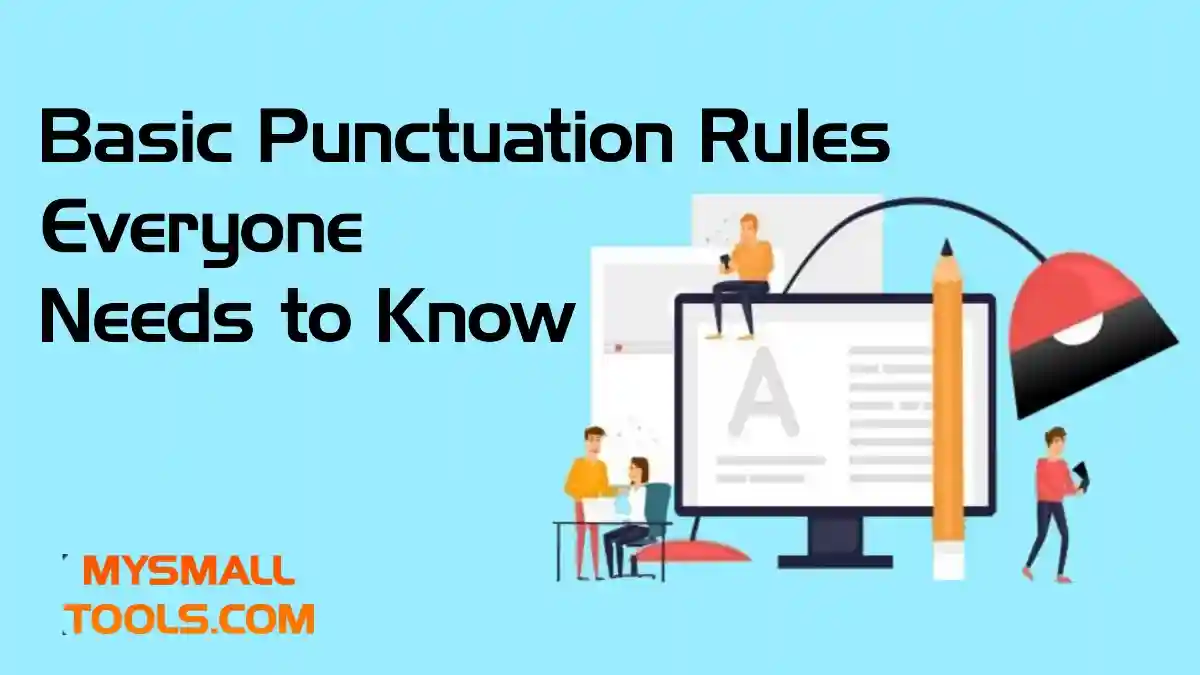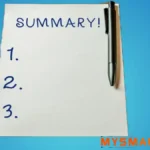The ways we communicate today, such as through social media and messaging applications, have made it incredibly easy to share our thoughts. Nonetheless, the rise of these platforms has altered how we interact with one another.
Increasingly, many individuals overlook spelling and punctuation errors in their communications. In these informal exchanges, the emphasis is predominantly on the content rather than grammatical accuracy.

Conversely, this casual approach isn’t suitable for writing blogs, emails, or articles. It’s crucial to focus on proper grammar and punctuation to engage your audience and motivate them to return to your site.
In the same vein, when crafting academic essays, even minor errors cannot be dismissed, as they can irritate instructors and potentially impact your grades. Therefore, mastering grammar rules is essential to becoming a better writer. Punctuation plays a significant role in grammar.
As a writer, mastering punctuation marks and understanding English punctuation rules is essential for producing polished text.
This blog entry will highlight fundamental punctuation rules that every writer should be aware of. Continue reading to gain comprehensive insights.
Also Read
What Are Punctuation Rules?
Many individuals dismiss the importance of learning punctuation rules, perceiving them as a waste of effort. One common question that arises is, why should I care so much about punctuation? If your aim is to impress readers or educators and achieve high marks, then your writing must be punctuated correctly.
Understanding punctuation rules is crucial in this context. These rules consist of guidelines that you should adhere to in order to ensure your sentences are error-free. Breaking these guidelines can make your work harder to read and change the meaning you want to convey.
Key English Punctuation Rules
There are many different symbols and rules used in punctuation. In this article, we will explore the most commonly used yet essential punctuation guidelines in English. So, let us dive in without delay!
Rule 1: To begin a list, use a colon.
A colon can be effectively utilized in various ways, but to ensure correctness, adhere to these two principles:
- Begin with a complete sentence prior to the colon.
- A list of items comes after the colon.
For instance:
I am embarking on a world tour, during which I will visit these three cities: London, New York, and Rome.
In this example, “these three cities” serves to introduce the list properly.
Rule 2: When separating two independent clauses, use a semicolon.
As a punctuation mark, a semicolon denotes a pause that is longer than a comma but shorter than a period.
Many individuals tend to misuse semicolons, particularly when attempting to connect ideas.
The following illustration will demonstrate the improper application of a semicolon:
Yesterday, we each explored different cities, which turned out to be an enjoyable experience.
In this case, it is clear that the portion preceding the semicolon stands as a complete thought, while the segment following lacks a subject, indicating it is a fragment.
Next, consider this example of the correct usage of a semicolon:
We all visited different cities yesterday; it was a good experience.
In this situation, the semicolon has been correctly placed since both parts surrounding it are full sentences.
Having grasped how to effectively utilize semicolons to connect two concepts, we will proceed to the next punctuation guideline.
Rule 3: Do Not Use an Apostrophe to Create Plurals
It has been observed that numerous people mistakenly attempt to pluralize words by incorporating an apostrophe. This error results in incorrect sentences. You must realize that an apostrophe cannot be used to form plurals under any circumstances.
An apostrophe primarily denotes possession with regard to another noun or the removal of letters from a word. Outside of these uses, an apostrophe has no other function.
For example, an apostrophe can be employed for:
- A singular possessive noun (Sam’s dog)
- A singular possessive noun that ends with -s (Miles’s car)
- A plural possessive noun (my brothers’ home)
- A contraction (can’t, don’t, shouldn’t)
Utilizing an apostrophe in situations other than these, like to create a plural form, constitutes a grammatical error.
Rule 4: Avoid Connecting Two Complete Sentences with Just a Comma
This error is commonly made by both novice and experienced writers. Joining two independent clauses with merely a comma can lead to a comma splice.
The improper use of commas to join sentences is demonstrated in the example below:
I’m planning to have dinner at a new restaurant tomorrow, and I hope I will enjoy the flavors.
It is evident that these two clauses are connected, but a comma alone is insufficient for joining them. Instead, you can utilize one of the following methods to link these statements:
- Use a semicolon to connect the two sentences:
Tomorrow, I’m going to eat dinner at a new restaurant; hopefully, the food will be good.
- Utilize a period to separate the sentences:
Tomorrow, I’m going to a new restaurant for dinner. I’m hoping I’ll enjoy the taste.
- Put a comma before a coordinating conjunction to join the sentences:
I’m thinking of dining at a new restaurant tomorrow, and I’m hoping the taste will appeal to me.
Rule 5: Use a Comma When Directly Addressing Someone
To prevent grammatical errors, it is essential to remember that when addressing someone directly, a comma should be used to set them apart in the sentence.
Here is an illustration of a sentence:
“Good afternoon, sir. Would it be feasible for me to visit your workplace today?
This particular rule regarding punctuation might appear straightforward, yet adhering to it can help prevent grammatical errors.
The meaning of a sentence can be drastically changed by omitting a comma or other essential punctuation mark.
Example sentence 1:
“Let’s eat, Father!”
In this context, a family member is inviting Father to join for a meal. The use of a comma here is appropriate, as it clearly signifies address.
Example sentence 2:
“Let’s eat Father!”
In this instance, it sounds as though the speaker is so ravenous that they are suggesting consuming Father.
These examples show how a sentence’s meaning can change when a comma is removed.
Rule 6: Maintain Consistency in Punctuation
This punctuation principle states that when a main clause is interrupted by either a comma or a dash, the same punctuation must be used at both the beginning and end of the interruption. Moreover, one item in a list shouldn’t be separated by a semicolon.
- False: Every boy and girl from our school went to the playground.
- Correct: All the girls, boys from Our School, went to the playground.
- Incorrect: Sam has visited London, England, Rome, Italy, and Sydney, Australia.
- True: Sam has traveled to Sydney, Australia; Rome, Italy; and London, England.
Rule 7: Limit Exclamation Marks to One Per Instance
Many may have encountered the use of two exclamation marks to convey enthusiasm (like !!). However, it is crucial to recognize that while this might be acceptable in texting, formal writing should only feature a single exclamation mark at a time.
Here are some examples:
- I’m excited to see you soon!
- I look forward to our meeting!
- You must not listen to him!
It is recommended to avoid exclamation marks entirely in academic writing. However, when storytelling or presenting a strong argument requiring emphasis, utilizing a single exclamation mark is appropriate.
Rule 8: Place Final Punctuation Inside Quotation Marks
It is common practice for many authors to position the final punctuation inside the quotation marks when completing a quote. This includes periods and exclamation points.
Here are some examples:
He inquired, “Who took the book from my table?”
“Don’t shout!” said my brother. Shaw said, “You don’t have to meet him.”
The period is appropriately contained within the quotation marks in the last example above, where it is substituted for a comma. The only time a question mark can be positioned outside the quotation is when it pertains to the overall sentence instead of the quote itself.
Example:
Brad said, “I’m not coming”?
Conclusion:
The insights provided in this post are designed to enhance your understanding of essential punctuation rules in English, which are vital for every writer to know in order to create compelling content. We trust that mastering these crucial punctuation guidelines will elevate your writing abilities and help you express your thoughts or information effectively.


